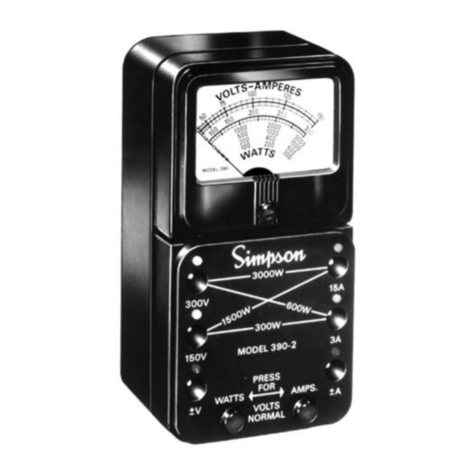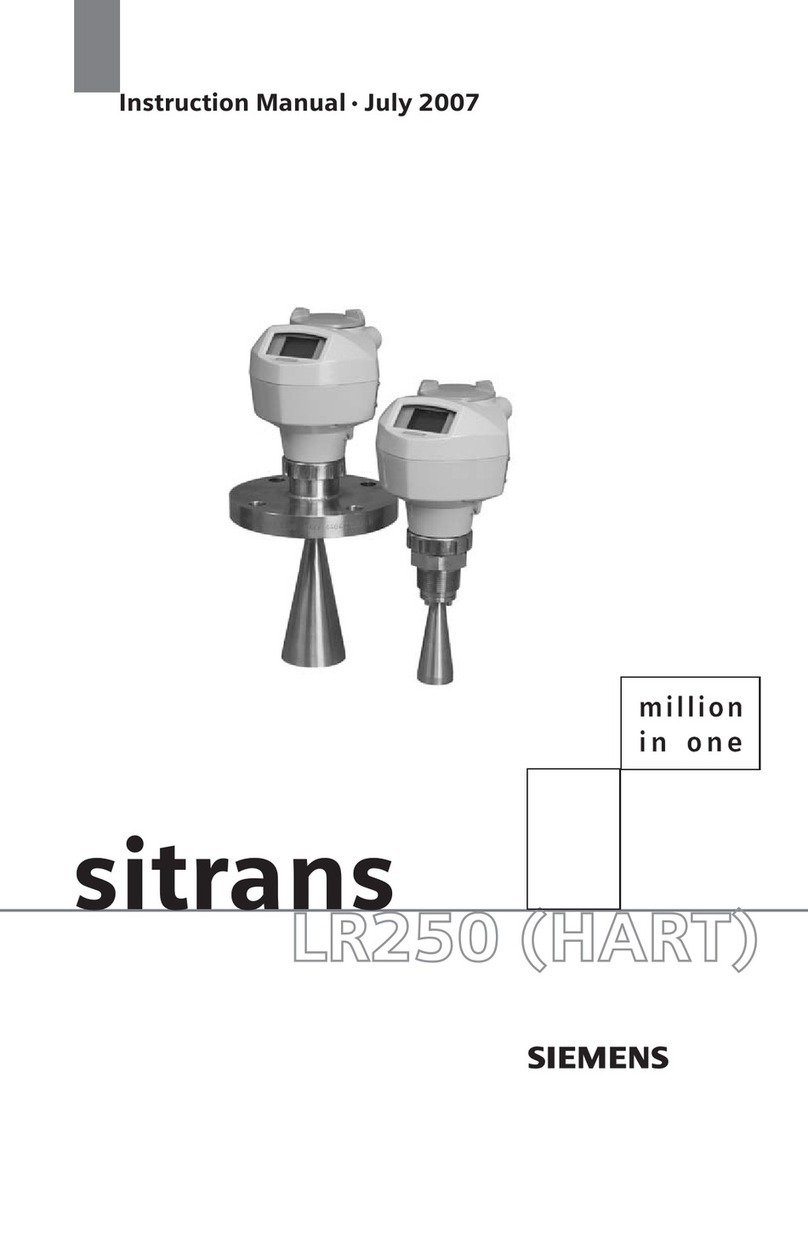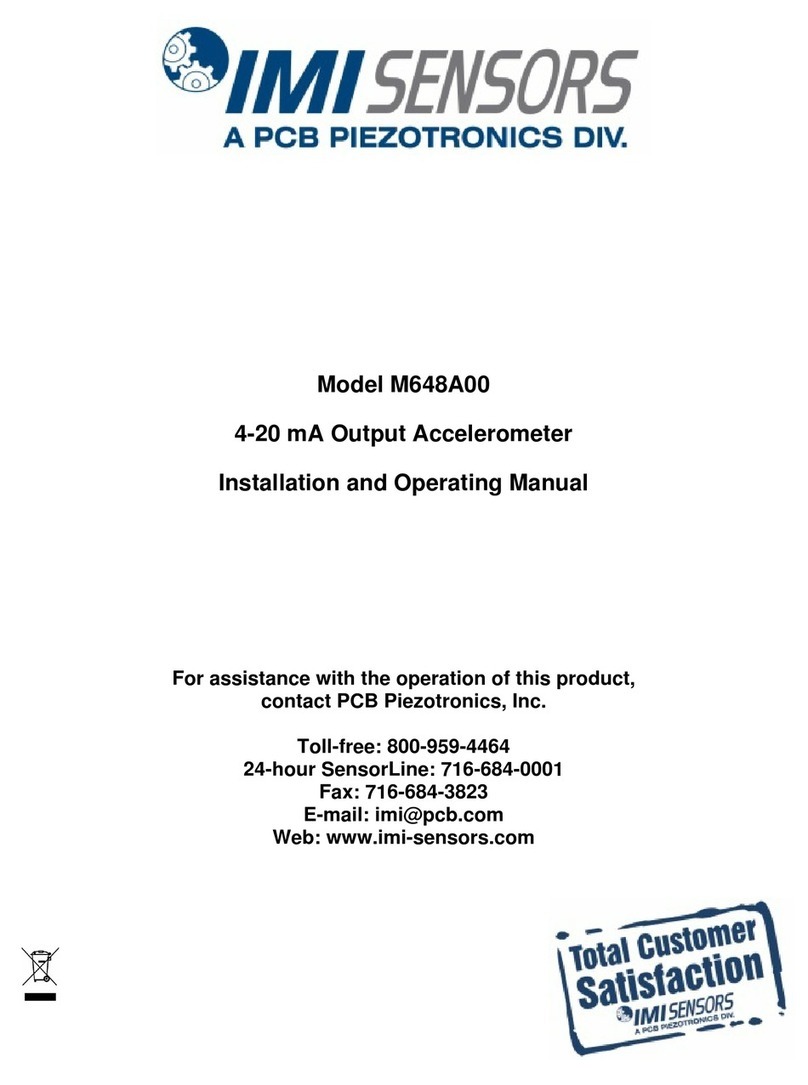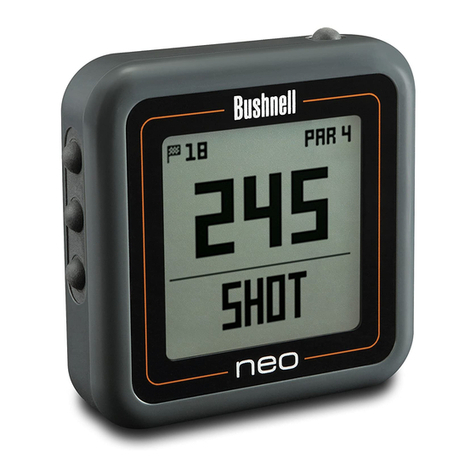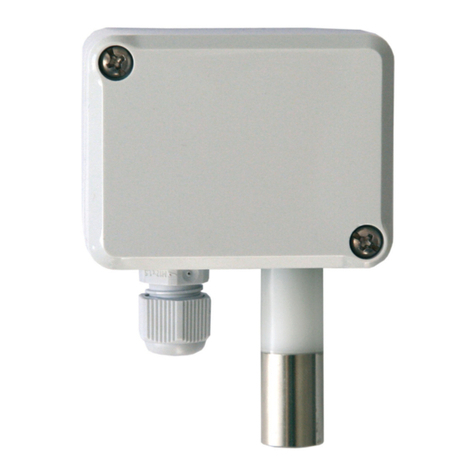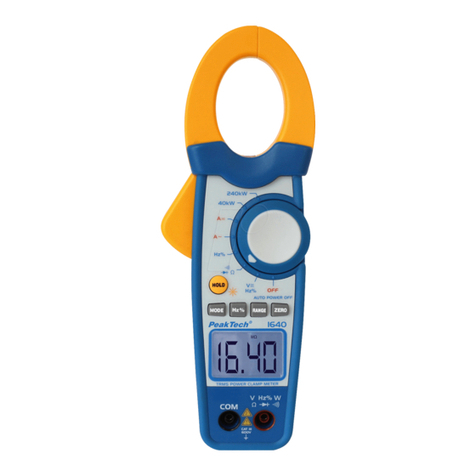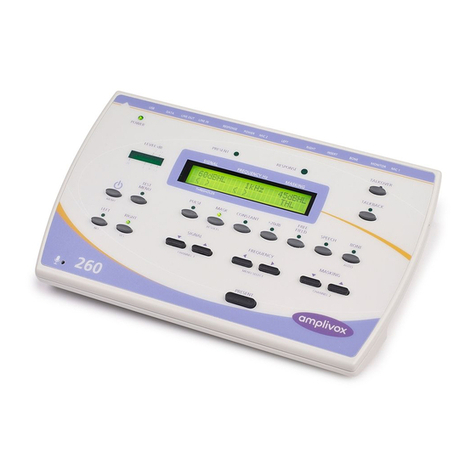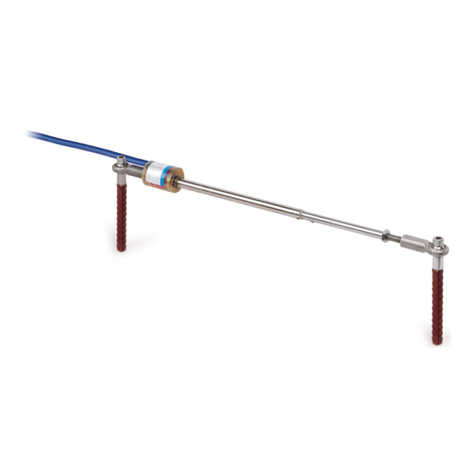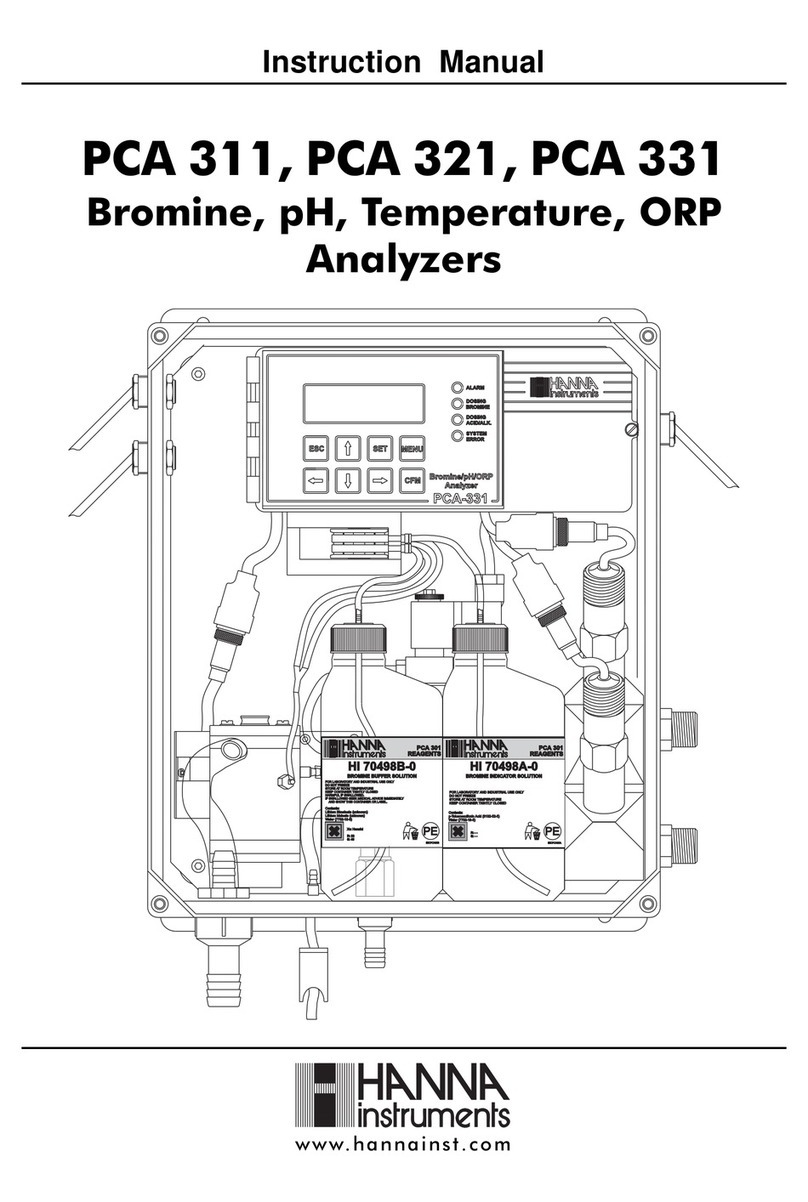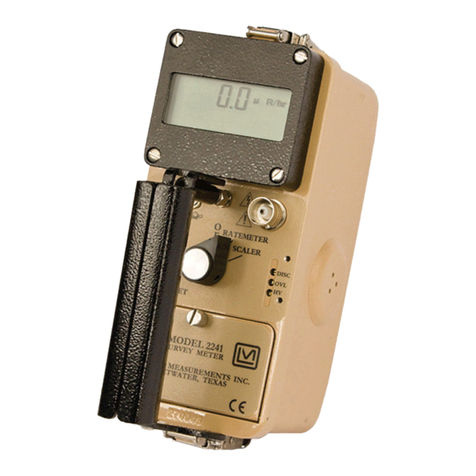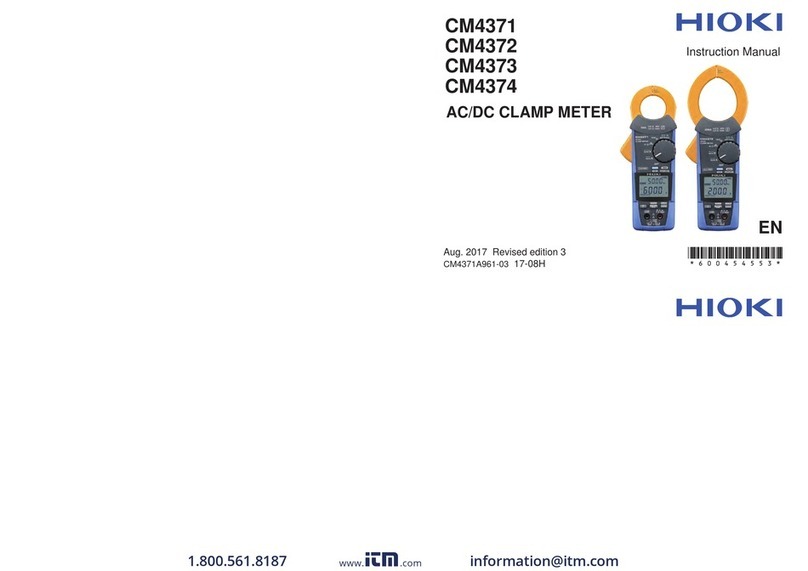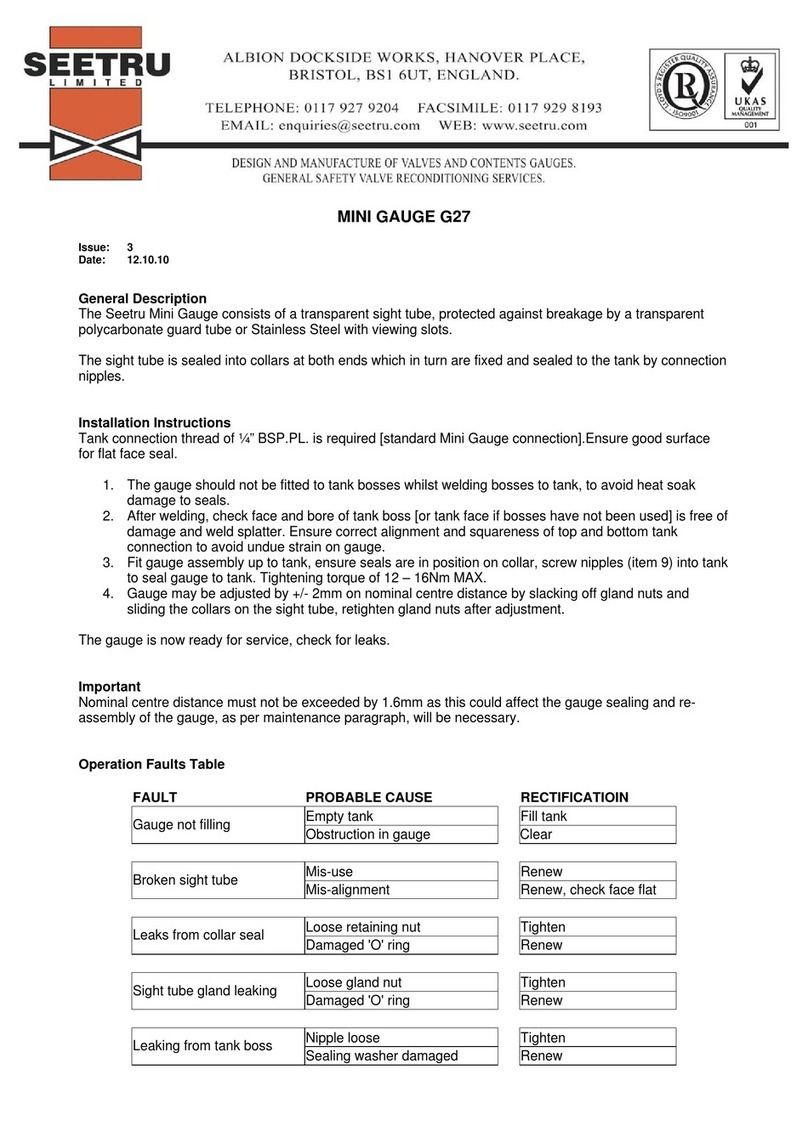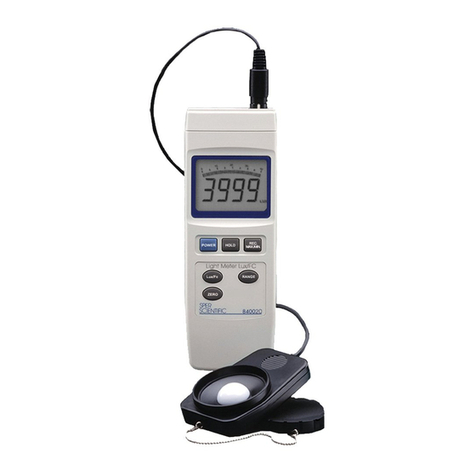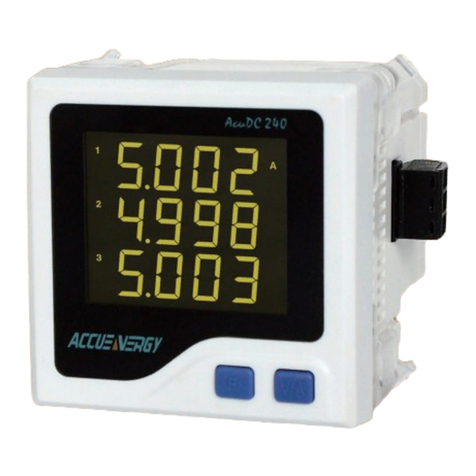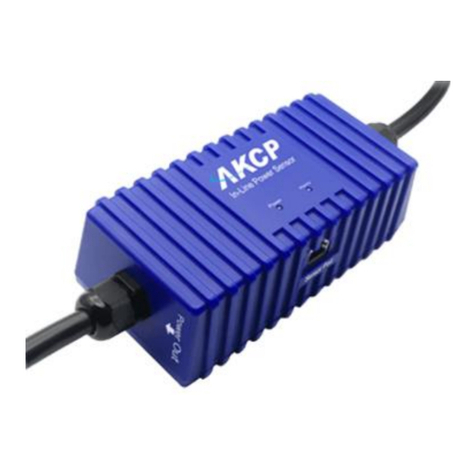Simpson S664 User manual

S664
Frequency Counter
Operation Manual
www. .com information@itm.com1.800.561.8187

Warranty and Returns
SIMPSON ELECTRIC COMPANY warrants each instrument and other articles manufactured
by it to be free from defects in material and workmanship under normal use and service, its
obligation under this warranty being limited to making good at its factory or other article of
equipment which shall within one (1) year after delivery of such instrument or other article of
equipment to the original purchaser be returned intact to it, or to one of its authorized service
centers, with transportation charges prepaid, and which its examination shall disclose to its
satisfaction to have been thus defective; this warranty being expressly in lieu of all other war-
ranties expressed or implied and of all other obligations or liabilities on its part, and SIMPSON
ELECTRIC COMPANY neither assumes nor authorizes any other persons to assume for it any
other liability in connection with the sales of its products.
This warranty shall not apply to any instrument or other article of equipment which shall have
been repaired or altered outside the SIMPSON ELECTRIC COMPANY factory or authorized
service centers, nor which has been subject to misuse, negligence or accident, incorrect wiring
by others, or installation or use not in accord with instructions furnished by the manufacturer.
Under the normal eld usage there is no need to remove the front bezel of this product. The
front bezel of this product should only be removed by a qualied technician.
About this Manual
To the best of our knowledge and at the time written, the information contained in this
document is technically correct and the procedures accurate and adequate to operate this
instrument in compliance with its original advertised specications.
Notes and Safety Information
This Instruction Manual contains warning headings that alert the user to check for hazardous
conditions. These appear throughout this manual where applicable, and are dened below.
To ensure the safety of operating performance of this instrument, these instructions must be
adhered to.
Warning, refer to accompanying documents.
Caution, risk of electric shock.
Attention, consulter les documents d’accompagnement.
Attention, risque de choc électrique.
www. .com information@itm.com1.800.561.8187
1

Contents
1 Product Description. . . . . . . . . . . . . . . . . . . . . . . . . . . . . . . . . . . . . . . . . .3
1.1 General Description. . . . . . . . . . . . . . . . . . . . . . . . . . . . . . . . . . . . 3
1.2 Part Number Identification. . . . . . . . . . . . . . . . . . . . . . . . . . . . . . . 4
1.3 Option Module Summary. . . . . . . . . . . . . . . . . . . . . . . . . . . . . . . . 4
2 Hardware Setup. . . . . . . . . . . . . . . . . . . . . . . . . . . . . . . . . . . . . . . . . . . . .5
2.1 Panel Installation. . . . . . . . . . . . . . . . . . . . . . . . . . . . . . . . . . . . . . 5
2.2 Removing / Installing Option Modules. . . . . . . . . . . . . . . . . . . . . 6
2.3 120/240 VAC Power Module. . . . . . . . . . . . . . . . . . . . . . . . . . . . . 7
2.4 Standard Input Module. . . . . . . . . . . . . . . . . . . . . . . . . . . . . . . . . . 7
2.5 Quadrature Input Module. . . . . . . . . . . . . . . . . . . . . . . . . . . . . . . 10
2.6 Excitation Module. . . . . . . . . . . . . . . . . . . . . . . . . . . . . . . . . . . . .13
3 Display & Rear Panel Controls. . . . . . . . . . . . . . . . . . . . . . . . . . . . . . . .14
3.1 Display. . . . . . . . . . . . . . . . . . . . . . . . . . . . . . . . . . . . . . . . . . . . . 14
3.2 Display Error Messages. . . . . . . . . . . . . . . . . . . . . . . . . . . . . . . . 15
3.3 Rate (Frequency) Scaling and Display. . . . . . . . . . . . . . . . . . . . . 15
3.4 A/B Channel Inputs. . . . . . . . . . . . . . . . . . . . . . . . . . . . . . . . . . . .16
Appendix A: Technical Specifications. . . . . . . . . . . . . . . . . . . . . . . . . . . .17
A.1 Functional Specifications. . . . . . . . . . . . . . . . . . . . . . . . . . . . . . . 17
A.2 Electrical, Environmental and Mech. Specifications. . . . . . . . . . 17
2
www. .com information@itm.com1.800.561.8187

1 Product Description
1.1 General Description
The S664 frequency counter fits a 1/8 DIN standard cutout and is perfect for
tight spaces, extending only 3.24” (82mm) behind the panel.
The unit is UL listed. The unit is for indoor use at altitudes up to 2000m, tem-
peratures between 0° and 40°C, and installation category III, pollution degree 2.
The counter is powered from 120 or 240 VAC.
One of four frequency ranges may be selected to measure from 1Hz to 35KHz.
The counter accepts pulses from different types of sensors, including Quadra-
ture, CMOS or TTL circuits and PNP or NPN devices.
An optional 12 VDC (100mA) excitation output module can provide power for
external sensors.
3
www. .com information@itm.com1.800.561.8187

1.2 Part Number Identification
The following matrix indicates the configuration of your S664 counter.
1.3 Option Module Summary
Figure 1. Option Module Slots (Rear View)
The S664 is a modular product that uses field configuring slide-in modules. The
modules slide easily into the rear of the counter.
Figure 1 displays the functional assignments for each module position. Table 1
describes available option modules for the S664.
Table 1. Option Module Summary
124
Input ExitationPower
Supply
Input
Standard
Quadrature
Power Supply
Basic Unit
S664 120 VAC
240 VAC
1
2
1
2
Excitation
None
12VDC
0
1
Other
None 0
Output
None 0
eludoM
tols epyT N/P noitpircseD noitceSeeS
1tupnIeludoMtupnIdradnatS 4.2
1tupnI tupnIlasrevinU/erutardauQ
eludoM 5.2
2.moC/txE46054eludoMnoitaticxECDV21 6.2
4rewoPeludoMrewoPCAV022/021 3.2
4
www. .com information@itm.com1.800.561.8187

2 Hardware Setup
2.1 Panel Installation
The S664 1/8 DIN counter requires a standard 1/8 DIN panel cutout of 1.77”
(45mm) high by 3.62” (92mm) wide. To install the counter into a panel cutout,
remove the clips from the side of the counter. Slide the counter through your
panel cutout, then slide the mounting clips back on. Press evenly to ensure a
proper fit.
Figure 2. Counter and Panel Cut-Out Dimensions
Figure 3. Panel Mounting Clips
2.04"
51.8mm
.52"
13.2 mm
1.8"
45mm
3.24"
82mm
3.62"
92mm
1.74"
44mm
3.93"
99.8 mm
5
www. .com information@itm.com1.800.561.8187

1. Remove module from case by inserting a screwdriver into tab slot opening at top of input
module. Apply pressure to release module from case. Repeat procedure for tab located on
underside of module and then slide module away from the case.
2. Refer to appropriate sections to congure switches or jumpers for proper operation.
Table 1 can be used to identify modules and their associated detail paragraph.
3. Install module by carefully aligning module edges with slots in case and pressing forward
until tabs (on top and bottom) engage.
2.2 Removing / Installing Option Modules
Shut power off before removing or installing any option modules
Couper le courant avant de retirer ou d’installer des modules optionnels
6
www. .com information@itm.com1.800.561.8187

2.3 120/240 VAC Power Module
Never connect AC mains (hot or neutral) to the Reset or Common terminals!
2.4 Standard Input Module
NOTE: A fusible link is not provided on this module.
A ½ Amp Time Delay fuse, Bussman MDL ½, or similar is required.
Remove power before wiring option modules.
The AC power module allows the S664 to be
operated from standard 50/60 Hz line power.
The power module will be congured as 120
VAC or 240 VAC per markings on the back
panel. Ensure the input rating of the supply
matches your line voltage. The power supply
module has provisions for a hard-wire Range
Select. This control can be a switch, relay
contact or solid state device. Actuation is
immediate upon an active Low for at least
2.5ms to this terminal. The reset circuit is
independent of the power circuit.
Figure 6. Standard Input Module
Coupez l’alimentation avant de raccorder les modules optionnels.
Ne jamais brancher sur secteur (chaudes ou neutres) pour la réinitialisation
ou terminaux communs!
Denotes module position 1 at rear of counter
Primary Input
Connect the input signal to A INPUT and COMMON
Program Step
Used only in special programming mode
Secondary Input
Direction Control or count pulse input
A INPUT
COMMON
USER
INPUT
B INPUT
IINPUT
COMMON
Denotes modules position 4 at rear
of counter
Power Supply 120 VAC or 240 VAC
power connection
Remote Reset
Active low 0.2V performs primary
reset
~
~VAC
VAC
RESET
COMMON
POWER
Figure 5. AC Power Module
www. .com information@itm.com1.800.561.8187
7

DIP switch SW1, gure 7, is used to set up the counter to conform to the electrical characteristics
of the sensor or signal being detected. Switch positions 1-3 congure channel B, while switches
4-6 congure channel A. These switches select bias (threshold voltages), low pass lter (enable/
disable) and sensor type (Sink or Source). Refer to the documentation that accompanied the
sensor for related information. The sensor can most likely be matched to one of the typical
switch settings shown in gure 8 and gure 8a.
Note: The input boards are designed so that selecting sourcing or sinking is based on the
type of sensor that is being used. If a PNP (sinking) sensor is being used, set the input
board for sinking also (switches 3 and 6 = OFF).
If channel B is not used, default settings for switch positions 1 through 3 should be selected.
Default settings are provided in Table 2.
The Input module also provides for a User input signal. On the S664, this input serves as a
secondary channel (Rate) hard-wired reset. This may be used, for example, to reset latched
alarm outputs that have been assigned to rate.
Figure 7. Standard Input Module Default Settings
8
www. .com information@itm.com1.800.561.8187

The S664 can accept inputs from many different sensors. The A and B chan-
nels may be configured independently as shown in Table 2. Figures 8 and 8a
have examples of some typical sensors and the wiring connections that would be
used.
Table 2. Standard Input Module DIP Switch Settings
* = Factory Default setting
1 B Channel Bias: OFF = Hi* VLT = 5.0 V VUT = 7.0V (+/- 10%)
ON = Low VLT = 1.6 V VUT = 3.6V (+/- 10%)
2 B Channel Frequency: OFF = Hi* (low pass filter disabled)
ON = Lo (low pass filter enabled)
3 B Channel Sensor: OFF = Sinking* (internal pull-up enabled)
ON = Source (internal pull-down enabled)
4 A Channel Bias: OFF = Hi VLT = 5.0 V VUT = 7.0V (+/- 10%)
ON = Low* VLT = 1.6 V VUT = 3.6V (+/-10%)
5 A Channel Frequency: OFF = Hi* (low pass filter disabled)
ON = Lo (low pass filter enabled)
6 A Channel Sensor Type: OFF = Sinking* (internal pull-up enabled)
ON = Source (internal pull-down enabled)
+
9
www. .com information@itm.com1.800.561.8187

The Quadrature / Universal Input Module has two operational modes: Quadrature mode and
Standard mode. Quadrature mode is selected by positioning JP1 and JP2 on pins 1 and 2.
Standard mode is selected by placing JP1 and JP2 on pins 2 and 3 (see Figure 10 for details).
Figure 8. Sensor Connection Examples
Figure 8a. Sensor Input Example
2.5 Quadrature Input Module
123456
HIGH BIAS
HIGH FREQUENCY
SINKING
LOW BIAS
LOW FREQUENCY
SOURCING
ON
123456
HIGH BIAS
HIGH FREQUENCY
SINKING
LOW BIAS
LOW FREQUENCY
SOURCING
ON
NPN SENSOR PNP SENSOR
123456
HIGH BIAS
HIGH FREQUENCY
SINKING
LOW BIAS
LOW FREQUENCY
SOURCING
ON
10
www. .com information@itm.com1.800.561.8187

Figure 10. Quadrature Input Module Default Settings
The Quadrature mode supports a wide range of encoders including the Simpson SE series.
While in Standard mode, this module works similarly to the Standard Input module, with the
added capability to selectively invert the A, B, and User input signals.
NOTE: If B channel is not going to be used, use the default switch settings
for SW1 positions 1 through 3.
Default settings are provided in Table 3. In both modes, the state of the User input signal can
be selected as active high or active low. DIP switch SW1 congures the counter to match the
specications of the accompanying sensor. When shipped from the factory, the counter is set
for X1 quadrature, as shown in Figure 10 and Table 3:
11
Dip Switch
Legend
= ON
= OFF
B Bias Off = Hi On = Lo
B Freq Off = Hi On = Lo
B Off = Sink On = Source
A Bias Off = Hi On = Lo
A Freq Off = Hi On = Lo
A Off = Sink On = Source
B Edge Off = On =
A Edge Off = On =
User pol Off = On =
Quadr Off = X4 On = X1
7
1234569
810
SW1
Dip Switch:
Shown in
Quadrature Mode
(Factory Default)
Figure 9.
Quadrature / Universal Input Module
COMMON
Denotes module position 1 at rear of counter
Primary Input or Quadrature A
Program Step Used only in special program mode
Secondary Input or Quadrature B
A INPUT
COMMON
USER
INPUT
B INPUT
IINPUT
www. .com information@itm.com1.800.561.8187

Table 3. Quadrature Module DIP Switch and Jumper Settings
JP1/2: Count Mode Selector
Jumpered 1-2 = Quadrature mode
Jumpered 2-3 = Standard counter mode
SW1: 10 Position DIP Switch
* = Factory Default setting
1B Channel Bias: OFF = Hi* VLT = 5.0V VUT = 7.0V (+/- 10%)
ON = Low VLT = 1.6V VUT = 3.6V (+/- 10%)
2 B Channel Frequency: OFF = Hi* (low pass lter disabled)
ON = Low (low pass lter enabled)
3 B Channel Sensor: OFF = Sinking* (internal pull-up enabled)
ON = Source (internal pull-down enabled)
4A Channel Bias: OFF = Hi* VLT = 5.0 V VUT = 7.0V (+/- 10%)
ON = Low VLT = 1.6 V VUT = 3.6V (+/- 10%)
5 A Channel Frequency: OFF = Hi* (low pass lter disabled)
ON = Lo (low pass lter enabled)
6 A Channel Sensor Type: OFF = Sinking* (internal pull-up enabled)
ON = Source (internal pull-down enabled)
7B Channel Count Edge: OFF = Rising (standard count mode only)
ON = Falling*
8A Channel Count Edge: OFF = Rising (standard count mode only)
ON = Falling*
9 User Input Polarity: OFF = High/open circuit = Inhibit Count
ON* = Low/closed circuit = Inhibit Count
10 Quadrature Mode: OFF = X4 (quadrature mode only)
ON =X1*
www. .com information@itm.com1.800.561.8187
12

12 VDC Excitation Module
The Excitation Module can supply 12 VDC at up to 100 mA for external sensors or encoders.
This excitation is isolated from the counter internal logic supply.
When using sensors or encoders that do not have a signal return or imply a signal return that
is in common with the supply voltage, a common attachment that ties the excitation supply to
the logic input common may be required.
Examples of this appear in gures 8, 8a, 11 and 12.
Figure 11. Wiring Encoder w/Excitaion Supply
Figure 12. Wiring Encoder with External Supply
Figure 2.6 Excitation Module
www. .com information@itm.com1.800.561.8187
13

3 Display & Rear Panel Controls
3.1 Display
Figure 14. Display Layout
• 6-digit 0.56” high red LED display.
• Units Window for supplied label or legend.
• Upon power up, the S664 will identify its model and version.
Figure 13. Excitation Module
14
EXCITATION
ISO+12V
ISOCOM
+
_
__
---
12 VDC, 100 mA max
Denotes module
position 2 at rear of
counter
Numeric & Message Display
Units Window
www. .com information@itm.com1.800.561.8187

3.2 Display Error Messages
Display Description Action
Required
9999 or
-999
(Flashing)
Display Over Range: The displayed count is too
large for the counter to display. Since the internal
count buffer is much larger than the display, the
counter will maintain accurate frequency well
beyond the display value.
Reset
Counter
E3
(Outputs
deactivate, count
stops)
Watchdog Fault: The counter did not experience
an orderly power-down. This can happen by
exceeding the maximum allowable count speed for
a sustained period of time.
Reset
Counter
3.3 Rate (Frequency) Scaling and Display
The S664 can measure frequencies ranging from 1.00 Hz to 35 KHz. The fre-
quency scale is selected according to Table 4. The frequency range is selected
by using a wire or switch across the RESET and COMMON terminals on the
rear of the counter. The range prompt (scl 1) will toggle each time the contact is
made.
Table 4. Frequency Scale Selection
Frequency can also be displayed as a signed entity and will be negative accord-
ing to the direction control. (See section 3.4.)
Range
Typical
Update
Period
Max
Update
Period
Min.
Input
Frequency
Max.
Input
Frequency
Comments / Typical Application
scl1 1.0 sec 3.0 sec 1.00 Hz 99.99 Hz 1/100 Hz resolution / measure
signals less than 100 Hz.
scl2 1.0 sec 2.0 sec 1.6 Hz 999.9 Hz 1/10 Hz resolution / measure
signals less that 1 KHz
scl3 0.5 sec 1.0 sec 4 Hz 9999 Hz 1 Hz resolution / measure signals
less than 10 KHz
scl4 0.5 sec 1.0 sec 0.01 KHz 35.00 KHz 0.01 KHz resolution / measure
signals in KHz
15
www. .com information@itm.com1.800.561.8187

3.4 A/B Channel Inputs
The A channel input is a pulse source. This signal must be limited to under 35
KHz. This corresponds to a minimum pulse width of 28.57 microseconds. The
signal does not need an even duty cycle (On vs. Off time) as long as a minimum
(high or low) of 1 microsecond is maintained (See figure 15).
Figure 15. Input Pulse Definition
The B Channel acts as a direction control. If the B input is in the active state,
frequency will be displayed as a negative number. When using the quadrature
input card (in quadrature mode), A and B encoder signals are translated to Pulse
and Direction signals internally.
1 us 1 us
Tp (Minimum)
16
www. .com information@itm.com1.800.561.8187

Appendix A: Technical Specifications
A.1 Functional Specifications
Frequency modes Scale 1 1.00 to 99.99 Hz 1 update / sec
Scale 2 2.0 to 999.99 Hz 1 update / sec
Scale 3 4 to 9999 Hz 2 updates / sec
Scale 4 0.01 to 35.00 KHz 2 updates / sec
Frequency Inputs Channel A and Channel B
Miscellaneous inputs Reset (Scale Select) and B (Direction Control)
Maximum count rate 35 KHz (Standard and Quadrature X1 modes)
8.75 KHz (Quadrature X4 mode)
Min pulse width 2 uS (Standard mode)
Frequency range
(internal)
-2,147,483,648 Hz to +2,147,483,648
Frequency accuracy
(instantaneous)
> ± 0.001% of reading
Frequency vs
temperature
+ 0.0001% of reading per °C
Frequency vs time
(aging)
± 0.001% of reading per year
Display Digits 4-digit, 7-segment with leading zero blanking
Display Decimal Point Position according to selected scale
Display LEDs Red 0.56" (14.2mm), high efficiency
Display Range - 999 to + 9999
(Independent of decimal position)
A.2 Electrical, Environmental and Mechanical
Specifications
Power Requirements AC Supply: 120 or 240 VAC, ±10%
Power Consumption 3VA
Reset Input Signal Active Low: 0.2 VDC = active
Storage Temperature -10 to 60°C
Operating Temperature 0 to 40°C
Relative Humidity
0 to 80% for temperatures less than 32°C,
decreasing linearly to 50% at 40°C. (Non-
condensing)
Bezel 3.93" x 2.04" x 0.52" (99.8 x 51.8 x 13.3mm)
Panel Cutout 3.62" x 1.77" (92 x 45 mm) 1/8 DIN
Case Depth 3.24" (82mm)
Weight 9.0 oz. (255.1 g)
17
www. .com information@itm.com1.800.561.8187

!
Quadrature / Universal input module
tupnI
slennahC resUdnaB,A
tupnI
noisrevnI
lennahcBdnaA.elbatcelesytiraloptupniresU
.ylnoedomdradnatsnievitcelesytiralop
noitarepO
sedom 4XerutardauQdna1XerutardauQ,dradnatS
tupnI
secruoS
NPNroPNP,scigolLTTroSOMC,tcatnochctiwS
sredocne)dedne-elgnis(erutardauqsecived
tupnI
ecnadepmI
%01±)CDV61-0.9(otpu-lluP.seR%5,K01:gnikniS
nommocotnwod-lluP.seR%5,K1.5:gnicruoS
sdlohserhTtupnI
B&A
slennahc
%01±V6.3=TUV%01±V6.1=TLV:edomsaiBwoL
%01±V0.7=TUV%01±V0.5=TLV:edomsaiBhgiH
resU
lennahC )xam(V51.3=TUV)nim(V9.0=TLV
ssapwoL
retlif
taevawerauqstupniV01ot0(zH002<ycneuqerF
)elcycytud%05
egatlovxaM deniatsusmumixamCDV03slennahcresUdnaB,A
Isolated 12V Excitation Module
tuptuOnoitatixE%5±CDV21taAm001
noitalosInoitatixEV0051
Standard input module
Input Channels A, B and User
Count edge High to low transition (A and B channels)
Input Sources Switch contact, CMOS or TTL logics, PNP or NPN
devices
Input Impedance Sinking: 10K, 5% Res. Pull-up to (9.0 - 16 VDC) ±10%
Sourcing: 5.1K, 5% Res. Pull-down to common
Input Thresholds
A & B channels Low Bias mode:VLT = 1.6V ±10% VUT = 3.6V ±10%
High Bias mode:VLT = 5.0V ±10% VUT = 7.0V ±10%
User Channel VLT = 0.2V (min) VUT = 3.0V (max)
Low pass filter Frequency < 200Hz (0 to 10V input square wave at
50% duty cycle)
Max voltage A, B and User channels 30VDC maximum sustained
18
www. .com information@itm.com1.800.561.8187
Table of contents
Other Simpson Measuring Instrument manuals

Simpson
Simpson S663 User manual

Simpson
Simpson 2865 User manual

Simpson
Simpson Mini-Max series User manual
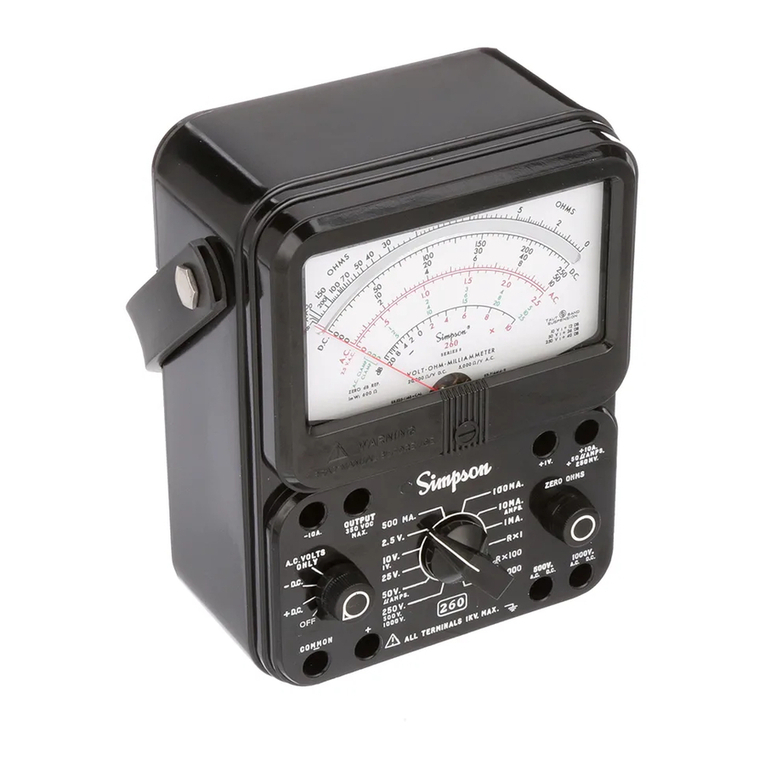
Simpson
Simpson 260 series 5M User manual

Simpson
Simpson Gima User manual
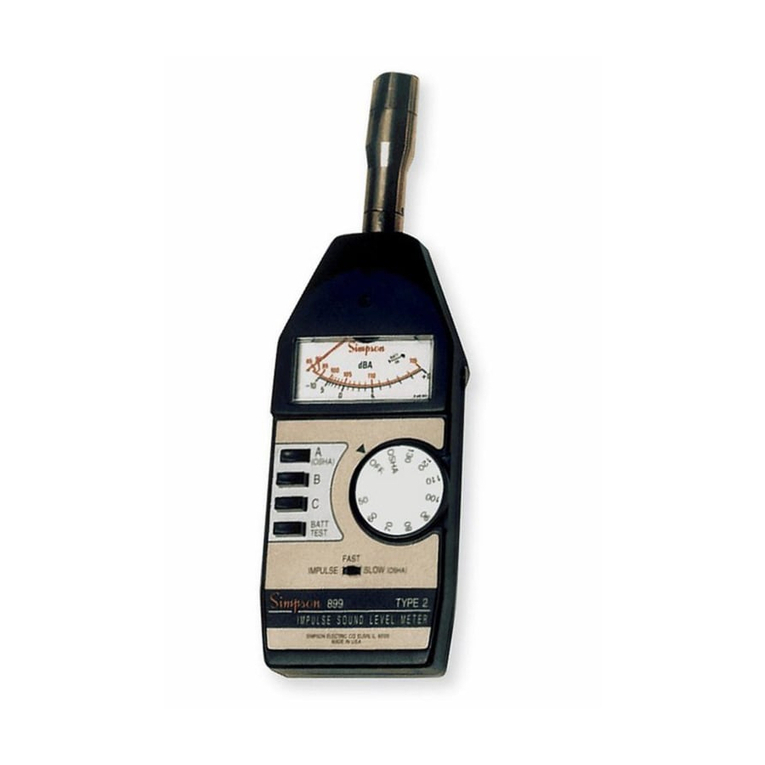
Simpson
Simpson 884-2 User manual
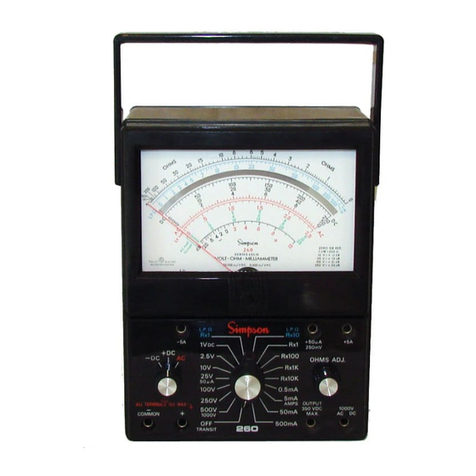
Simpson
Simpson 260-6XLPM User manual
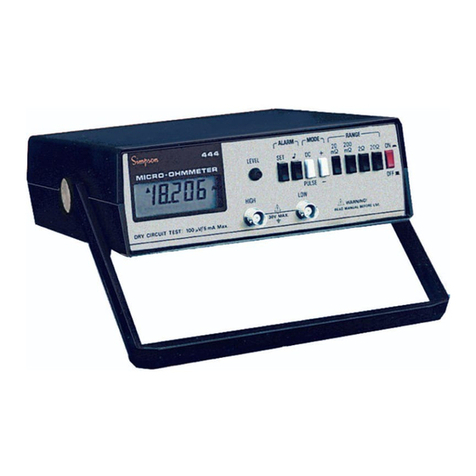
Simpson
Simpson 444 User manual

Simpson
Simpson 897 User manual
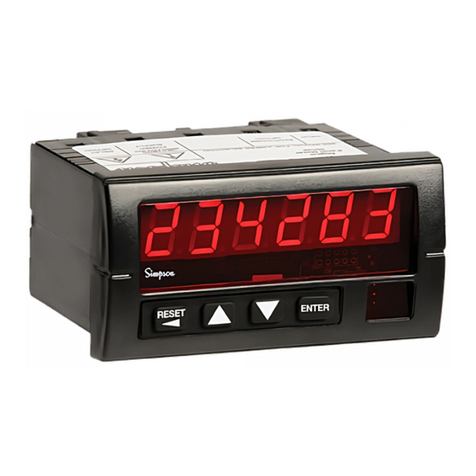
Simpson
Simpson S662 User manual
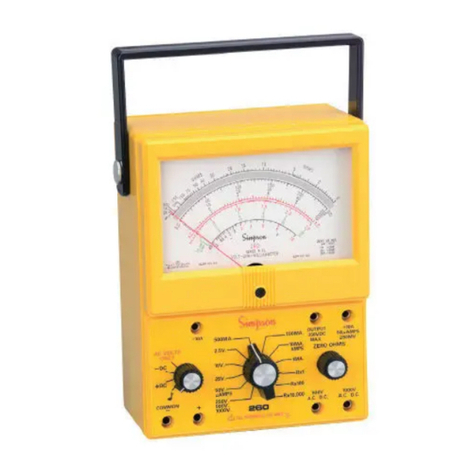
Simpson
Simpson 260-8XPI User manual

Simpson
Simpson SPEEDMULLER User manual

Simpson
Simpson 260 series 5M User manual

Simpson
Simpson 260 series 5M User manual
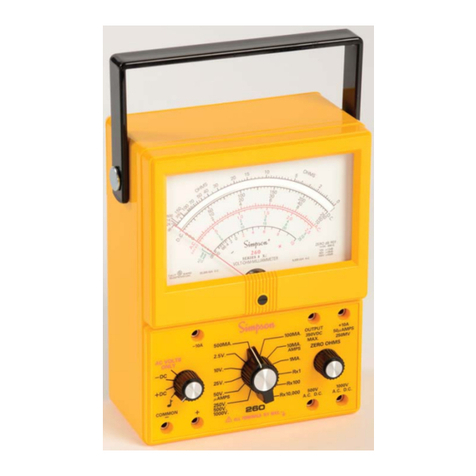
Simpson
Simpson 260-8XI User manual

Simpson
Simpson 160 User manual

Simpson
Simpson 886-2 User manual
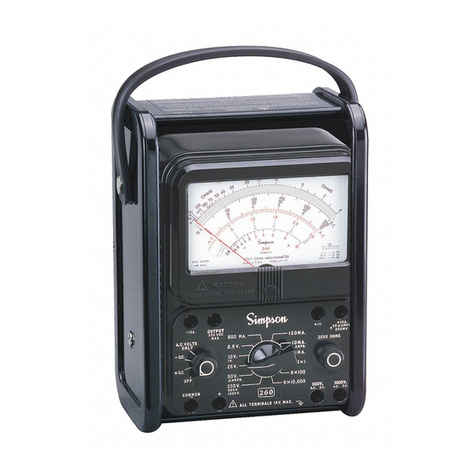
Simpson
Simpson 260-8P User manual

Simpson
Simpson Amik 301 User manual

Simpson
Simpson 260-8PRT User manual



